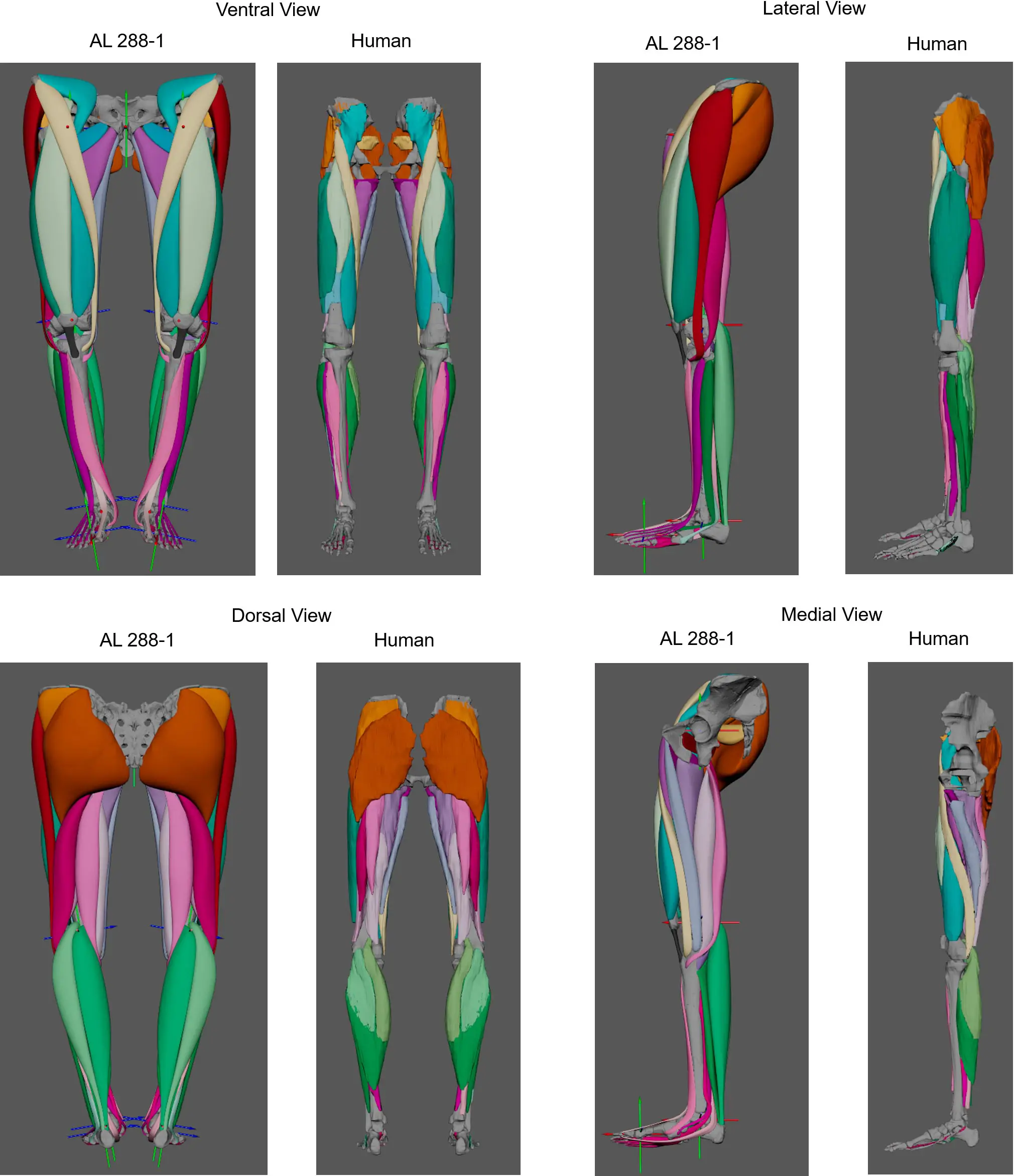"Advanced 3D Technology Reveals Lucy, a 3.2 Million-Year-Old Fossil, Could Stand Upright Like Modern Humans"

A digital model of the muscles in the leg and pelvis of the early human ancestor Australopithecus afarensis has been created by Cambridge University researcher Dr. Ashleigh Wiseman for the first time. Using scans of the fossil 'Lucy', the modeling revealed the species had powerful leg and pelvic muscles suitable for tree-dwelling, but also knee muscles that allowed it to stand erect. The study, published in the Royal Society Open Science journal, identified 36 muscles in each leg, most of which were larger in Lucy than in modern humans due to the fact that muscle made up 74% of her thigh mass, versus 50% in humans.
“Australopithecus afarensis would have roamed areas of open wooded grassland as well as more dense forests in East Africa around 3 to 4 million years ago. These reconstructions of Lucy’s muscles suggest that she would have been able to exploit both habitats effectively.”
Lucy was a young adult, who stood at just over one metre tall and probably weighed around 28kg. Lucy’s brain would have been roughly a third of the size of ours.
To recreate the muscles of this hominin, Wiseman started with some living humans. Using MRI and CT scans of the muscle and bone structures of a modern woman and man, she was able to map the “muscle paths” and build a digital musculoskeletal model.
A 3D polygonal model, guided by imaging scan data and muscle scarring, reconstructing the lower limb muscles of the Australopithecus afarensis fossil AL 288-1, known as ‘Lucy’. Credit: Dr. Ashleigh Wiseman
Wiseman then used existing virtual models of Lucy’s skeleton to “rearticulate” the joints – that is, put the skeleton back together. This work defined the axis from which each joint was able to move and rotate, replicating how they moved during life.
Finally, muscles were layered on top, based on pathways from modern human muscle maps, as well as what little “muscle scarring” was discernible (the traces of muscle connection detectable on the fossilized bones). “Without open access science, this research would not have been possible,” said Wiseman.
These reconstructions can now help scientists understand how this human ancestor walked. “Muscle reconstructions have already been used to gauge running speeds of a T-Rex, for example,” said Wiseman. “By applying similar techniques to ancestral humans, we want to reveal the spectrum of physical movement that propelled our evolution – including those capabilities we have lost.”
Reference: “Three-dimensional volumetric muscle reconstruction of the Australopithecus afarensis pelvis and limb, with estimations of limb leverage” by Ashleigh L. A. Wiseman, 14 June 2023, Royal Society Open Science.DOI: 10.1098/rsos.230356




